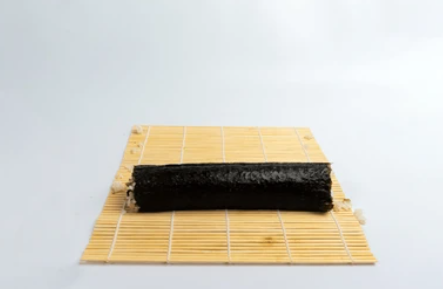티스토리 뷰
Trader Joe’s KIMBAP Korean Tofu and Vegetable Seaweed Rice Roll, kimbap
엄지손가락on 2023. 8. 24. 12:59Delicious Homemade Kimbap Recipe - Step-by-Step Guide for Beginners
Learn how to make mouthwatering kimbap at home with our easy-to-follow recipe.
Follow these steps to create the perfect Korean seaweed rice rolls, packed with vibrant flavors and fresh ingredients.
Discover the joy of creating your own delectable kimbap with our comprehensive guide. Whether you're a novice in the kitchen or a seasoned cook, our step-by-step recipe will help you craft this iconic Korean dish.
Packed with nutritious ingredients and bursting with flavors, homemade kimbap is a delightful treat for your taste buds. Follow along to learn the art of crafting these beautiful and delicious seaweed rice rolls.
Gather your ingredients to embark on this culinary journey
sushi rice, toasted seaweed sheets (nori), protein of your choice (such as cooked bulgogi, imitation crab, or grilled tofu), a variety of fresh vegetables (like cucumber, carrots, and spinach), sesame oil, sesame seeds, salt, and a bamboo rolling mat.
Step-by-Step Guide

Prepare the Rice
Begin by washing 1.5 cups of sushi rice under cold water until the water runs clear.
Cook the rice according to package instructions. Once cooked, gently fluff the rice and let it cool slightly before seasoning with a mixture of 2 tablespoons of rice vinegar, 1 tablespoon of sugar, and 1 teaspoon of salt. Incorporate the seasoning gently to avoid mashing the rice.

Prep the Ingredients
While the rice is cooling, slice your chosen protein and vegetables into thin, uniform strips. A mandolin can help achieve consistent slices. Blanch spinach briefly, then squeeze out excess water. Drizzle sesame oil and a pinch of salt over the blanched spinach.

Set Up Rolling Station
Lay a bamboo rolling mat on a clean surface and place a sheet of plastic wrap over it. Position a sheet of toasted seaweed (nori) on top of the plastic wrap.

Spread Rice Evenly
With slightly wet hands to prevent sticking, evenly spread a thin layer of seasoned rice onto the seaweed, leaving about 1-inch of nori bare at the top edge.

Arrange Fillings
Position your chosen fillings in a row along the bottom edge of the rice-covered seaweed. Be creative and colorful with your choices to make each roll visually appealing.

Roll It Up
Using the bamboo mat as a guide, carefully lift the bottom edge of the mat and seaweed and start rolling over the fillings. Apply gentle pressure to create a tight roll. Wet the top edge of the nori with a bit of water to seal the roll.

Shape and Slice
Once your kimbap roll is complete, give it a gentle squeeze to ensure a firm shape. With a sharp, damp knife, slice the roll into bite-sized pieces. Wipe the knife clean between cuts to achieve neat slices.

Present and Serve
Arrange the sliced kimbap on a serving platter, showcasing the vibrant colors of the fillings. Serve with a dipping sauce made from soy sauce, a splash of sesame oil, and a sprinkle of sesame seeds.

Congratulations!
You've mastered the art of making homemade kimbap. With a few fresh ingredients and some practice, you can enjoy these flavorful Korean treats in the comfort of your home. Whether it's a snack, a light meal, or a party appetizer, your kimbap will surely impress your taste buds and your guests. Embrace the creativity this dish allows and savor the satisfaction of crafting a beloved Korean classic from scratch.
'일상 정보 알림이' 카테고리의 다른 글
| 스트릿우먼파이터2 크루곡 퍼포먼스 글로벌 대중 투표 시작 [스우파2] (0) | 2023.08.24 |
|---|---|
| 관세청 유니패스 세관공매 절차 경매 참여방법 재테크 부업 입찰 낙찰 (1) | 2023.08.24 |
| 스우파2 레이디바운스 놉 베씨 비기 나로 카프리 스트릿 우먼 파이터2 라인업 참가크루 방송투표 (0) | 2023.08.18 |
| 스우파2 딥앤댑 미나명 다우니 쏠 락커지 미니팍 제이제이 구슬 스트릿 우먼 파이터2 라인업 참가크루 방송투표 (0) | 2023.08.18 |
| 스우파2 원밀리언 리아킴 에이미 도희 데비 레디 하리무 스트릿 우먼 파이터2 라인업 참가크루 방송투표 (0) | 2023.08.18 |




